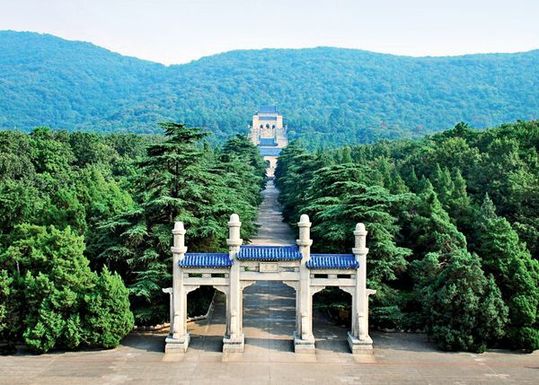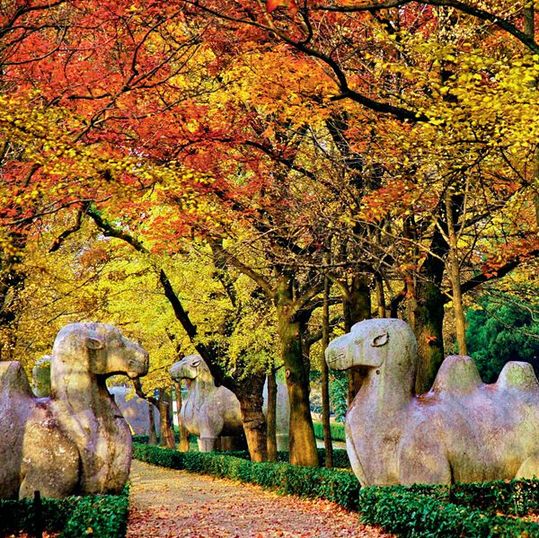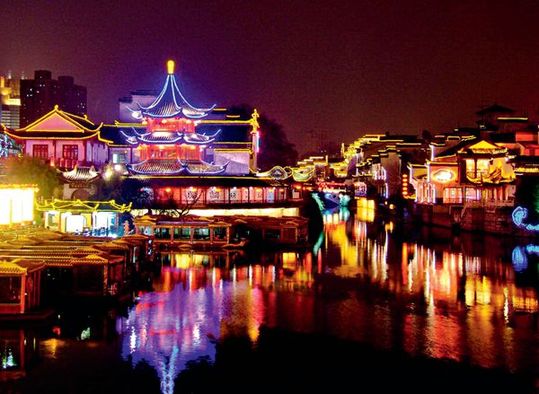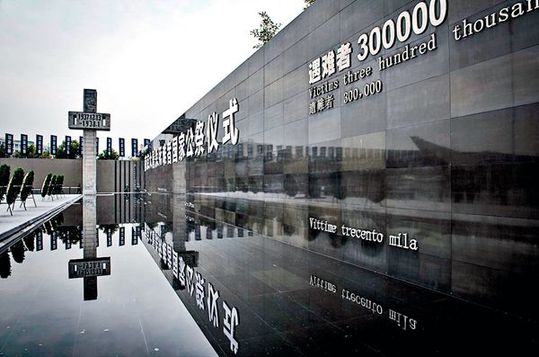Tips in Nanjing
 0 Comment(s)
0 Comment(s) Print
Print E-mail China Today, January 19, 2017
E-mail China Today, January 19, 2017
Sun Yat-sen Mausoleum:
Dr. Sun Yat-sen was the "forerunner of the democratic revolution" in China. His mausoleum is in the Zhongshan Scenic Area amid the southern Zijinshan Mountain.

Reclining on a mountain slope, the mausoleum encompasses a memorial archway bearing the two Chinese characters "Bo Ai," meaning universal love, a path leading to the mausoleum, gate, stone steps to pavilions housing stelae, the main hall, and the coffin chamber. All are aligned on a central axis, so honoring the traditional layout of a Chinese architectural complex.
A bird's-eye view reveals the mausoleum's resemblance to the "Liberty Bell." Its cyan glazed tiles and granitic wall give the mausoleum a solemn and awe-inspiring ambience.
Transportation: Bus routes 9, 34 (the Boai Line), 201, 202, and 203 go to the Mausoleum.
Ming Xiaoling Mausoleum:
Located in the southern foothills of Zijinshan Mountain, the mausoleum contains the tomb of Emperor Zhu Yuanzhang, founder of the Ming Dynasty, and Empress Ma.

As the first Ming imperial tomb, it exemplifies the architectural and stone carving excellence of that age. Its design and architecture had direct influence on tomb construction during the Ming and Qing dynasties which lasted for 500-odd years.
Although all its wooden structures were destroyed, the mausoleum still has the power to impress by virtue of the grand and opulent scale on which it was built. The underground chamber and main buildings are well maintained, so preserving the integrity and authenticity of the overall mausoleum layout.
Transportation: Take Subway Line 2 and get off at Xiamafang Station.
Fuzi Miao:
Located on the northern bank of the Qinhuai River in southern Nanjing, the Nanjing Fuzi Miao, or Confucius Temple, is where people go to worship Confucius. A cultural and commercial hub during the Ming and Qing dynasties, buildings in the complex include the Confucius Temple itself, the Jiangnan Examination Hall, and the Xue Gong (the Imperial Academy).

The Lantern Fair, a popular folk celebration that marks the end of the half-month-long Spring Festival, is also held here.
Transportation: Take Subway Line 3 to Fuzimiao Station.
Nanjing Massacre Memorial Hall:
The memorial hall is located at No. 418, Shuiximen Street in Jianye District, a locality also known as Jiangdongmen, close to a site where thousands of people were killed and buried.

The hall comprises four sections: exhibition zones, the sheltered skeletal remains of victims, an outdoor square, and an exhibition hall displaying historical documents.
The entire edifice is built in greyish white marble and exudes an imposing solemnity. The hall highlights every aspect of the Nanjing Massacre with historical materials, cultural relics, architecture, sculpture, and film. It occupies a total area of 120,000 square meters. An area of 18,000 square meters is given over to exhibitions whose exhibits include 200,000 or more historical items related to the massacre.






Go to Forum >>0 Comment(s)